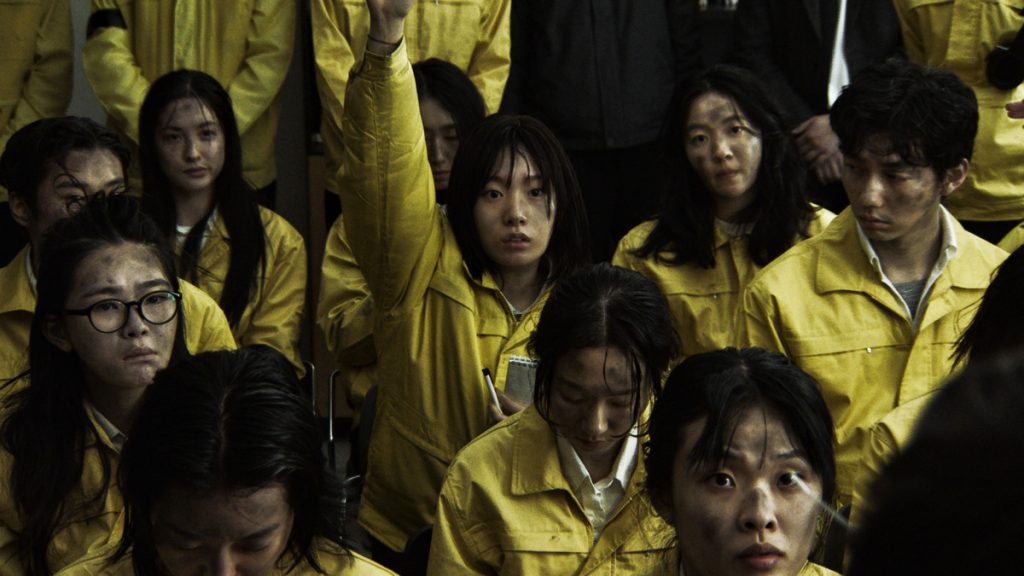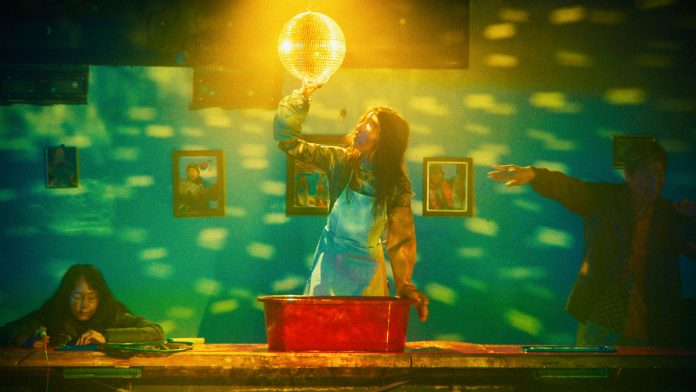When director Syeyoung Park made the short film The Fin in 2017, the feedback from one of his university professors was blunt: the film was “unwatchable” and made him “want to vomit.” “I cried,” admits the South Korean filmmaker in an interview from Locarno where the feature-length version of The Fin had its world premiere in the Concorso Cineasti del Presente section.
Instead of giving up, Park pressed on. Determined to refine his craft, he kept filming, learning and experimenting. Years later, he released his first feature, The Fifth Thoracic Vertebra (2022), which won three awards at the Bucheon International Fantastic Film Festival, Best Director at the Seoul Independent Film Festival and a Special Jury Mention at the Fantasia Film Festival. The film was also featured at Sitges, Fantaspoa and the Torino Film Festival.
Park never abandoned his dream of expanding The Fin. Over eight years, the project evolved from an initial failure to a handcrafted low-budget production, weathering the pandemic and enduring years of reshoots and re-edits, into a dystopian fable about oppression and identity.
Set in a post-war, ecologically devastated Korea where mutants known as Omegas are hunted and exploited as cheap labor, the film follows Mia, an Omega hiding in an artificial fishing store, and Sujin, a government worker who begins to question the ideology she has always served.
In this interview, Park discusses the creative evolution of the film, his choice of raw textured aesthetics, the crafting of characters from opposite worlds and the symbolism behind the fishing store setting. He reflects on how reality has surpassed fiction and how a project born from limitations and setbacks has finally found its place at one of the world’s most auteur-friendly film festivals.
The press notes say it began as a short you made in 2017. How did that early version grow into the feature we see today, and what was your creative process along the way?
The short film I shot in 2017 was the first time I made a film entirely on my own—acting as my own cinematographer, my own editor, and working with actors for the first time.
As a result, the film wasn’t very good, as my university professor bluntly told me. He looked at it and said it made him want to vomit because the camera work was so shaky and the editing so bad. He refused to screen it anywhere, and I cried.
I stopped editing that film and moved on to other projects. I improved my camera work, refined my editing skills, and in 2021—four or five years later—I decided to revisit the idea. I felt my skills as a director had grown, so I developed it into a feature, expanded the cast, and ambitiously planned to shoot in one month, edit in another, and finish in three months total.
After shooting, I realized it was still a mess—my camera was still shaky and my editing still weak. I reached out to producers at Seesaw Pictures and a co-production office to help with post-production. We ended up editing and re-shooting over three more years before finally finishing a couple of months ago.
Has your professor seen the finished version?
Oh, I haven’t shown it to him.
Will you show it to him, or are you worried about his reaction?
No, no, no—I can show it to him.
There’s a saying after the pandemic that what once felt dystopian has become reality. Nowadays, to make a dystopian film, you have to go further. How did that influence your writing process?
That’s a great observation. We shot during the pandemic, and afterwards, so many things happened—in America, Latin America, Europe, the Midwest, even in Asia.
When I first wrote the script, it felt futuristic and dystopian. But after three years of production, I realized real life had become even more dystopian than the film. The story shifted from a vision of the future to a reflection of the present.
Real events kept influencing the story. The idea of the wall came two years after we shot, and the “Save Water Program” appeared three years later. Many key elements emerged during post-production.
The film uses familiar concepts—mutants, walls as political metaphors—but in a unique way. How did you adapt real-world references into your own vision?
I was working on a very small budget—not even enough to shoot a European short film—yet I was making a sci-fi dystopia.
Initially, I planned to use prosthetics for the mutants, but it was too expensive. We improvised: fake feet from cheap silicone, for example. For the wall, there’s no actual wall between North and South Korea—only a fence and a militarized zone—so I photographed walls in Korea and Berlin, then digitally stitched them together.
It was a very DIY approach—using what I had and showing less to suggest more.

How did you decide on the two female leads, and was there a specific reason for those choices?
The film has three main characters—Sujin, Mia, and the Omega (one male, two females). I wanted the two women to be complete opposites: Sujin was 16–17, Mia in her early 30s, Omega 38.
They walk, talk, and look at each other differently. I wanted Sujin, the young government worker, to be fascinated by Mia—not in a romantic way, but in a magical sense. For me, Mia was like a siren, and yes, that mythological image inspired her character.
The fish shop is a striking location. The film’s visuals are colourful and highly contrasted. Is that your signature style, or was it specific to this project and its budget?
Every location in the film except the fishing store has a single colour palette—the ocean is red, the city is black and white, or in one tone like blue or purple.
The fishing store, however, has every colour possible. I wanted the outside world to feel dead and monotone, but inside the store, full of life and nostalgia. The “cheap” colours reminded me of Korea in the 80s and 90s, and I wanted to make them beautiful.
The film has a raw, textured look rather than the polished style common on streaming platforms. Is that deliberate?
Yes. Even the screens we’re speaking through now aren’t perfectly clean. I have poor eyesight—without glasses, the world is blurred. For me, clean images feel artificial and leave no space for imagination.
Grain, noise, and texture give the audience room to imagine beyond the frame. We shot in low light, lifted the shadows during grading, and kept the noise instead of removing it. That texture became part of the emotional storytelling.
Given the budget constraints, how significant is it for The Fin to screen at Locarno? And what’s next for you?
In 2017, I submitted the short version of The Fin to Locarno—it was the first festival I ever applied to. Seeing the feature here now is emotional. Locarno has always supported auteurs who resist outside pressures.
As for my next project, I shot Who Stole My Cross? last November. It’s based on a true story—my father, a Christian pastor, discovered a thief who had stolen over 100 crosses from around the city. I’m editing it now.
Will we see it next year?
If it’s good, yes. If it’s not good, never—because no one will take it.


